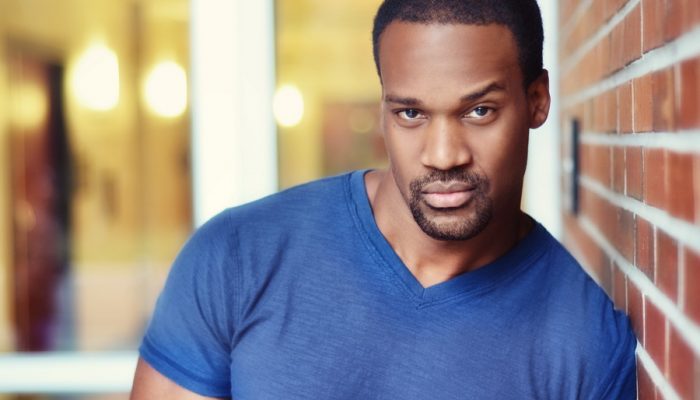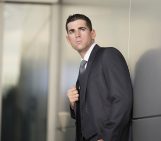
While most posing tips articles and tutorials usually focus on the female form, there isn’t that much information available about how to properly pose men. And even when you find a guide, it is more about listing some poses and seldom you see somebody explaining the why. Why is it that we need to pose a man in a different way? Talking about the why and laying some ground rules would not only help photographers understand classic male posing better, but also serve as a guide to creating their own poses and variations.
Before we even get started, it is important to first identify the goals when posing a man vs posing a woman.
When a man thinks about the best version of himself, he doesn’t think about being pretty, cute or showing off his nice hourglass body. A man wants to be strong, fit and tall while oozing coolness, confidence, and self-control.
While when posing women we usually try to accentuate curves, when posing men the opposite holds true. A man’s body is not about curves, it is about angles and raw power. It’s about the V and the jawline.
General facts that will help you better pose a person and understand why some poses work:
- Things that are closer to the camera look bigger
- Things that are further from the camera look smaller
- A longer lens flattens depth(for example, a big nose looks smaller at 120mm than it looks at 50mm)
- A short lens make the face rounder and “puffier”
- Things pointed directly at the camera look shorter (foreshortening)
The Face
The jawline
Is a critical measurement of perceived manliness. Your job as a photographer is to make sure the jawline is well defined and as angular and sharp as possible. Ask the subject to push their chin out and a little bit down. This will gently stretch the neck while hiding part of the neck from the camera. You can further refine the jawline by clever use of shadow and by making sure the jawline doesn’t blend into the neck. And never, and I mean NEVER, let your subject pull his chin back; this will not only accentuate any existing double chin but also create one where one wasn’t there to begin with.
Eyes
Big round puppy eyes do not look good on men. They evoke fear and confusion. Ask your subject to do what Peter Hurley calls a “squinch”. It is a half squint, where the lower eyelids raise a bit to narrow the eyes while the upper eyelids don’t move much or at all. This will make your subject look like “he is up to something”, adding a bit of mischievousness, playfulness, and character to the image.
Head tilt(note this is about tilt, not turn)
Never let a man tilt his head towards the camera. That is a cutesy feminine pose and even the most interesting man in the word would lose his man card posing like that. Either keep the head neutral or tilt slightly away from the camera. Be mindful that tilting too much away from the camera can be perceived as being rather arrogant and a bit aggressive.
Quick pro tips:
- A lot of people have one eye smaller than the other (you would be surprised once you start paying attention). Moreso than you think. You can choose to ignore this or, if you think you want to do something about it, pose the smaller eye closer to the camera (general fact1).
- When dealing with a heavy blinker, ask your subject to close his eyes right and open them on three. You should be able to get at least a few frames with no blinking right after the subject opens his eyes.
- If the double chin is a bit too much to handle just by pushing the chin out and down, you can try blocking it out of the view by posing the subjects’ hand in such a way that it obstructs a direct view of the double chin (chin resting on fist, fist to the side of neck, etc)
- If someone has a big nose, use a longer lens and shoot the face straight (no head turn) (general fact 3 & 5). Foreshortening and optics would come to the rescue.
- Puffy faces look skinnier when using a longer lens (general fact 3).
- If your subject has a big forehead or is balding, shooting from a lower angle will help alleviate the problem (general fact 2)
- If the person gets tired and has droopy eyes, shooting from a higher angle would force them to look up into your camera, thus forcing the eyes to open a bit more
The Body
The ideal male body form is a V shape: broad shoulders, thin waist. Here are some for accentuating and defining the V shape with proper male body posing
Shoulders
Shoulders should look as broad as possible. It follows that you may want as much as you can to square the shoulders towards the camera and if possible leaning a bit towards the camera (general fact 1 and making sure general fact 5 is not coming into play).
Waist
You waist will look slimmer if your lower body does not exactly square the camera. Also, keeping your upper body closer to the camera will make your wait seem slimmer (general fact 1, 2 and 5)
Posture
Good posture is key for a good male portrait. Make sure your subject is standing tall, with shoulders up yet relaxed and keeping his core tight.
Hands
Man don’t do very well with their hands when they have nothing to do with them. You need to keep your subject’s hands busy. You need to give a man’s hand a reason for being where it is. Otherwise, most man will feel it looks stupid and then gets uncomfortable. Here are a few ways to take care of this problem:
- hands in pockets, either thumb in (GQ style) or palm in and thumb hooked on the pocket
- hands hooked in the belt loops or one hand hooked on the belt buckle
- one hand loosely to the side, one hand in pocket
- arms crossed on the chest with shoulders a bit down (relaxed shoulders)
- holding a newspaper with one hand
- fixing tie with one hand
- fixing link cuffs
- hands on a football, guitar or another prop that your male subject may have brought with him
- one hand in pocket, the other hooked on a jacket thrown over the shoulder
- when standing, you can have your subject rest his hands on a tall chair, desk, etc
Legs
When standing
- legs crossed at the shin-level with weigh on the back leg
- legs shoulder width apart, one leg slightly closer to the camera
- when leaning against a wall, the leg closer to the camera gets higher on the wall and the knee gets bent
- the leg closest to the camera higher (on a rock, step, etc) with the outer tight facing the camera
When sitting (chair, bench, desk)
- for a natural relaxed pose when sitting on a chair, the ankle of one leg goes onto the knee of the other. Shoot slightly from above (avoid getting too close
- leaning against a desk at the waist, feet a bit forward, arms crossed on chest
- when posing sitting, the subject should not sit square with the camera
Now, this is not by any means an exhaustive tutorial on male posing. But, by understanding why we do what we do, we no longer have to rely on our memory and recall “male pose 34”. We can be more flexible, better prepared for unforeseen circumstances and we can adjust on the fly. In the end, what we want is for our client to look his best.

